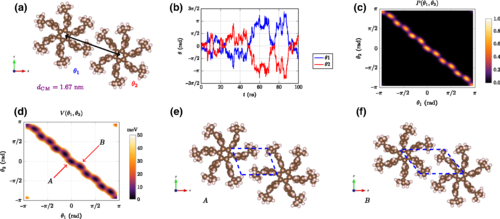The miniaturization of gears towards the nanoscale is a formidable task posing a variety of challenges to current fabrication technologies. In context, the understanding, via computer simulations, of the mechanisms mediating the transfer of rotational motion between nanoscale gears can be of great help to guide the experimental designs. Based on atomistic molecular dynamics simulations in combination with a nearly rigid-body approximation, we study the transmission of rotational motion between molecule gears and solid-state gears, respectively. For the molecule gears under continuous driving, we identify different regimes of rotational motion depending on the magnitude of the external torque. In contrast, the solid-state gears behave like ideal gears with nearly perfect transmission. Furthermore, we simulate the manipulation of the gears by a scanning-probe tip and we find that the mechanical transmission strongly depends on the center of mass distance between gears. A new regime of transmission is found for the solid-state gears.

The miniaturization of gears towards the nanoscale is a formidable task posing a variety of challenges to current fabrication technologies. In context, the understanding, via computer simulations, of the mechanisms mediating the transfer of rotational motion between nanoscale gears can be of great help to guide the experimental designs. Based on atomistic molecular dynamics simulations in combination with a nearly rigid-body approximation, we study the transmission of rotational motion between molecule gears and solid-state gears, respectively. For the molecule gears under continuous driving, we identify different regimes of rotational motion depending on the magnitude of the external torque. In contrast, the solid-state gears behave like ideal gears with nearly perfect transmission. Furthermore, we simulate the manipulation of the gears by a scanning-probe tip and we find that the mechanical transmission strongly depends on the center of mass distance between gears. A new regime of transmission is found for the solid-state gears.
